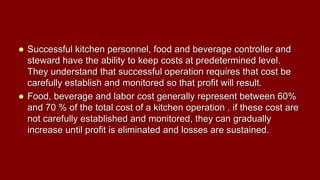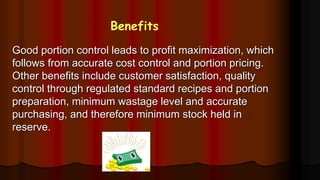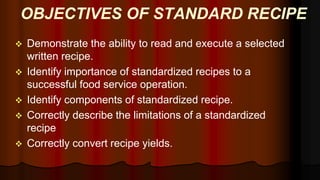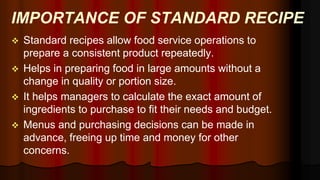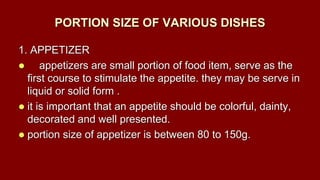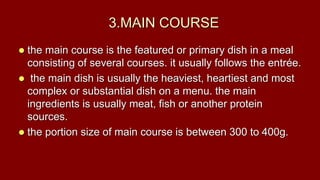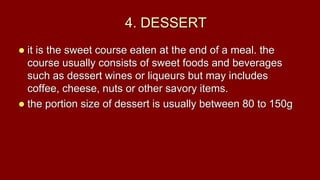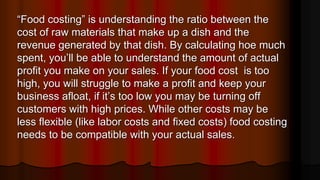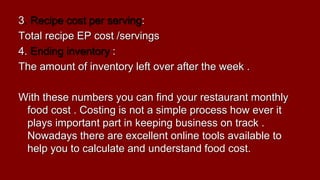This presentation discusses kitchen cost control. It emphasizes establishing standard recipes and portion control to maximize profits through minimizing food costs and waste. Standard recipes specify exact ingredients and methods to ensure consistency, while portion control regulates serving sizes. Together, these practices allow for accurate costing and pricing of menu items to maintain competitive prices. The presentation outlines various cost control methods for purchasing, receiving, production, labor, and equipment usage.






